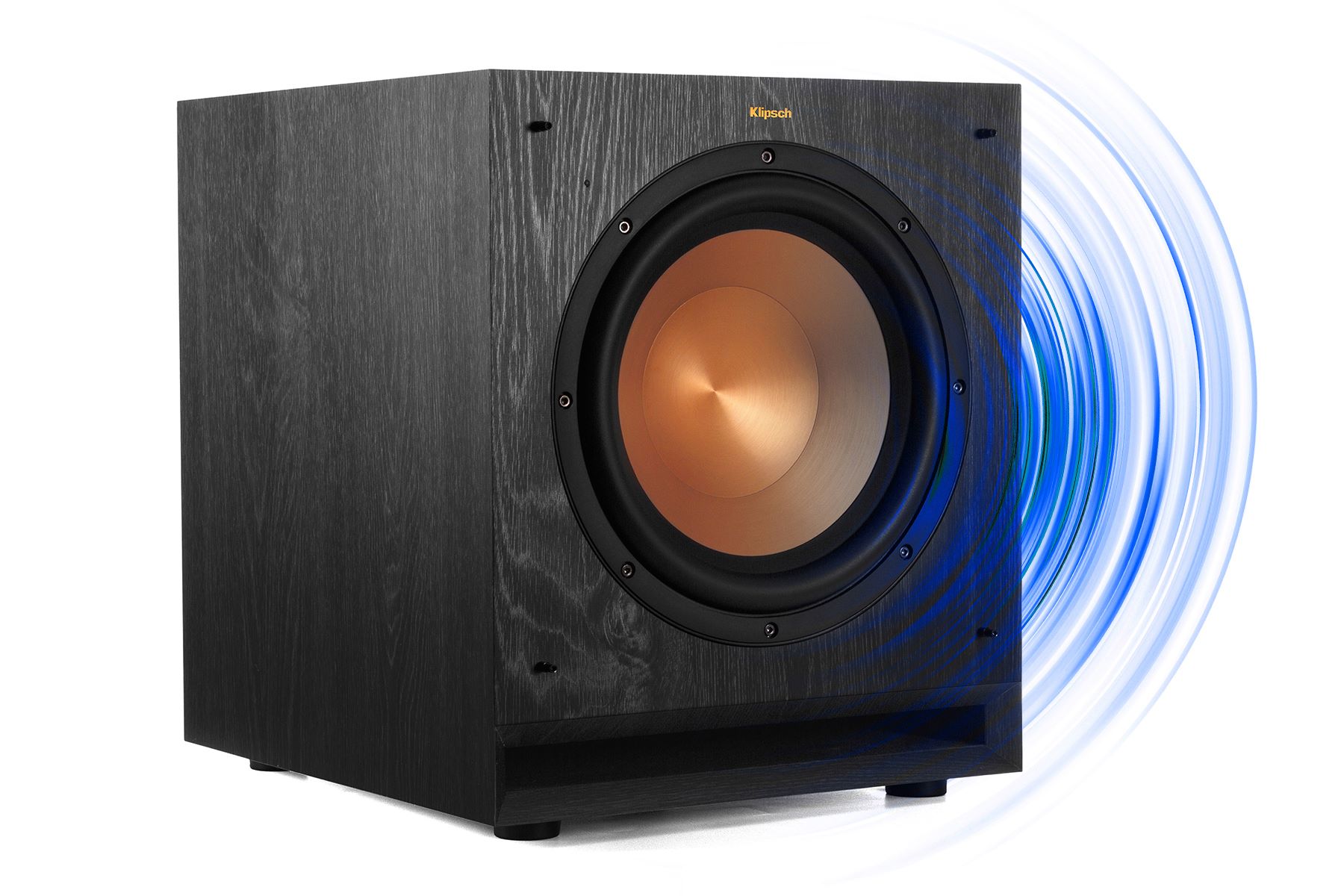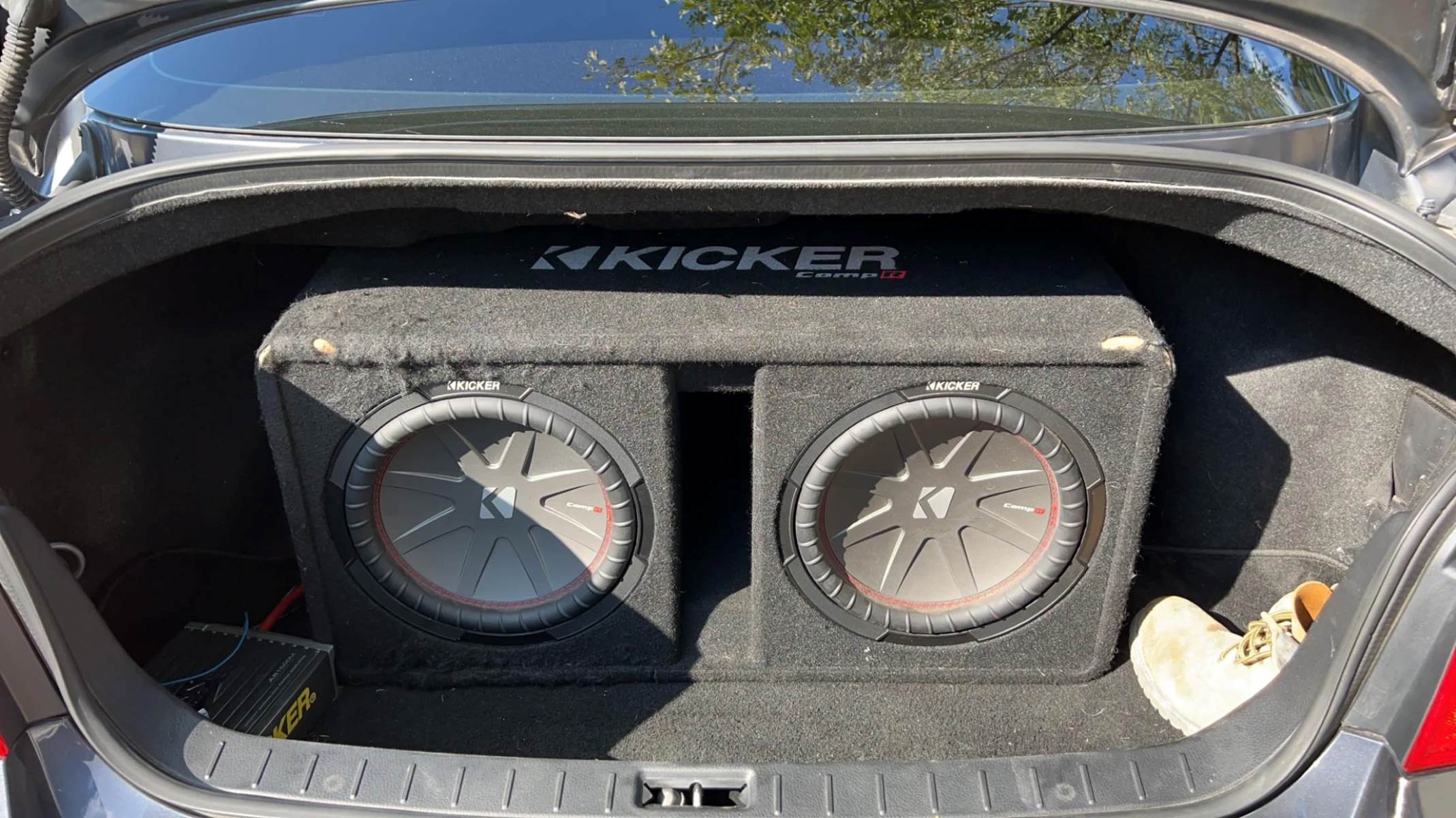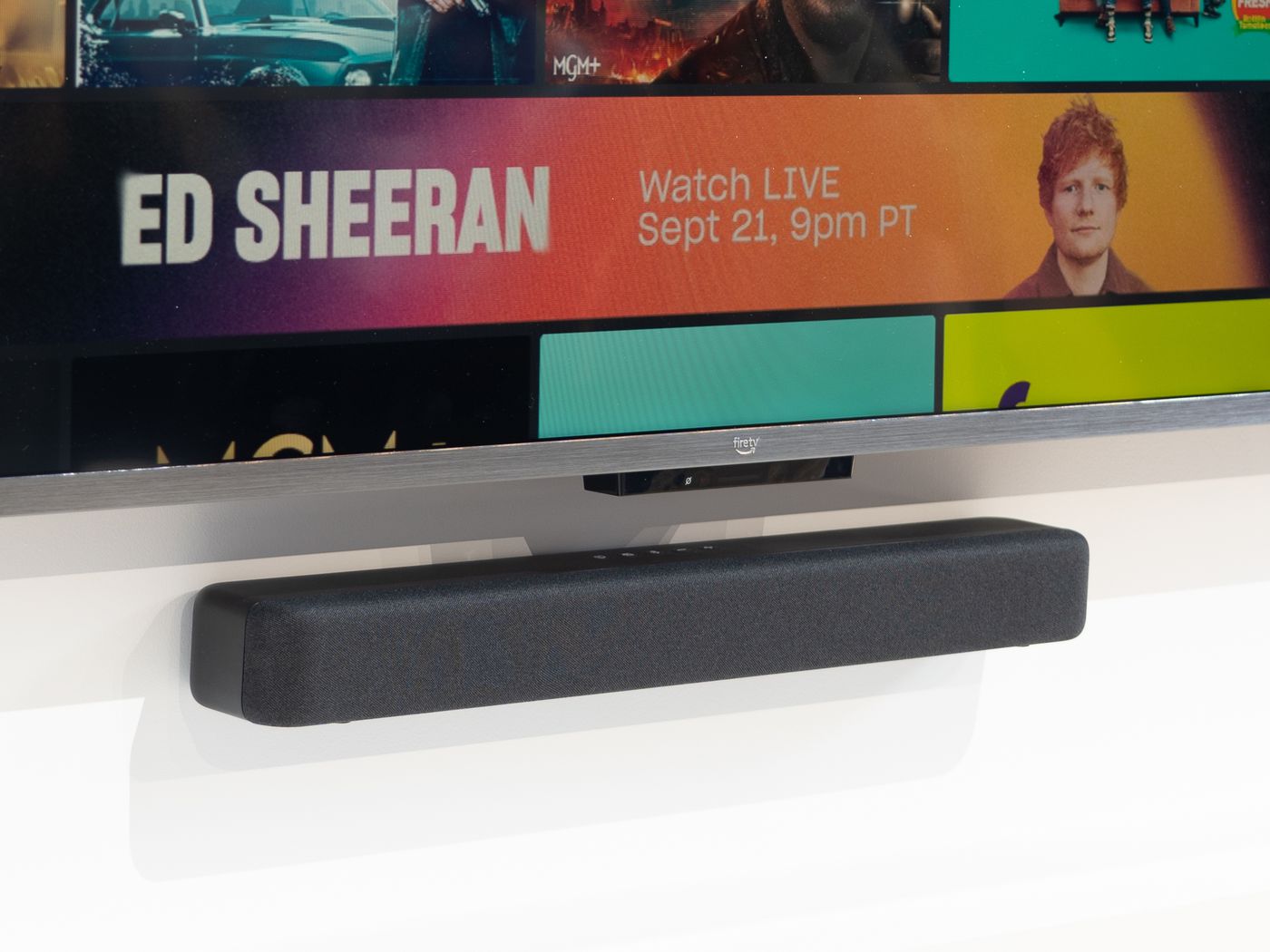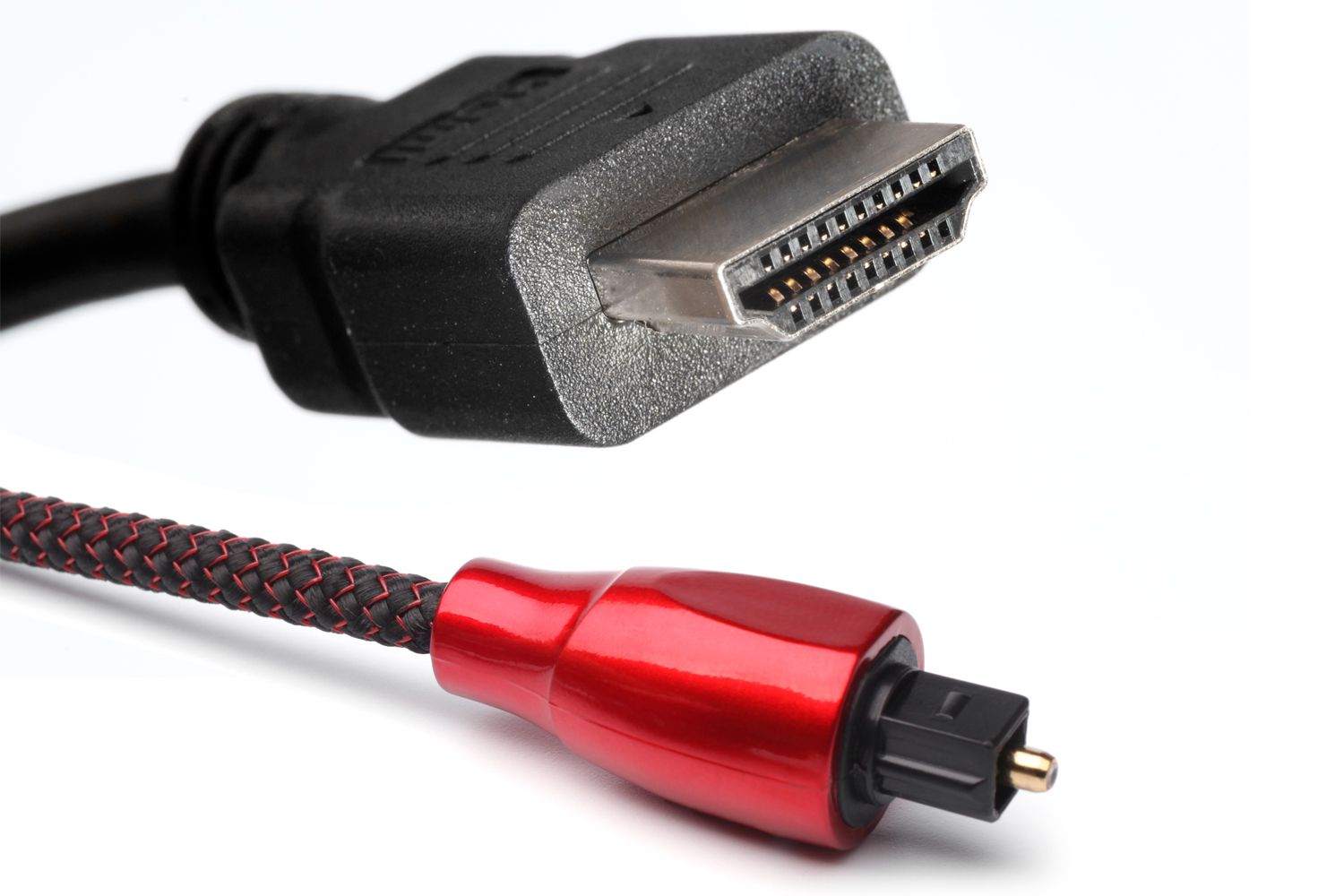Home>Devices & Equipment>Subwoofer>Which Is Better Down Firing Or Front Firing Subwoofer


Subwoofer
Which Is Better Down Firing Or Front Firing Subwoofer
Modified: February 18, 2024
Discover the ultimate audio experience with our guide on the best subwoofers. Uncover the pros and cons of down-firing and front-firing subwoofers to elevate your sound system.
(Many of the links in this article redirect to a specific reviewed product. Your purchase of these products through affiliate links helps to generate commission for AudioLover.com, at no extra cost. Learn more)
Table of Contents
Introduction
When it comes to enhancing the audio experience, subwoofers play a vital role in delivering deep and powerful bass frequencies. Subwoofers are specialized speakers designed to reproduce low-frequency sounds that regular speakers struggle to produce. They are commonly used in home theater systems, car audio systems, and music studios.
However, when it comes to choosing a subwoofer, there are a few factors to consider. One of the main decision points is whether to go for a down-firing or front-firing subwoofer. Both have their advantages and it ultimately comes down to personal preference and the specific requirements of your audio setup.
A down-firing subwoofer refers to a configuration where the driver, or the speaker cone, is facing downwards towards the floor. On the other hand, a front-firing subwoofer has the driver positioned on the front of the cabinet, facing the listener.
In this article, we will delve into the differences between down-firing and front-firing subwoofers and weigh the pros and cons of each option. By understanding the key distinctions, you’ll be better equipped to make an informed decision that best suits your sound preferences and room acoustics.
Definition of Down Firing Subwoofer
A down-firing subwoofer is a type of subwoofer configuration where the driver, or the main speaker cone, is positioned facing downwards towards the floor. This design allows the subwoofer to radiate sound waves in a downward direction, which can have some unique advantages.
One of the benefits of a down-firing subwoofer is its ability to utilize the floor as a sound reflector. When the sound waves hit the floor, they bounce back and interact with the surrounding objects and walls in the room. This can create a more immersive audio experience by filling the space with low-frequency vibrations. Additionally, the floor acting as a reflector can help distribute the bass frequencies evenly throughout the room, reducing the chances of localized “boomy” or “empty” spots.
Another advantage of a down-firing subwoofer is its ability to minimize “port noise.” Port noise is a phenomenon that occurs when the air movement through the ports of a subwoofer creates unwanted noise or distortion. By positioning the driver facing downwards, the sound waves are directed away from the ports, reducing the likelihood of port noise and improving the overall clarity of the bass reproduction.
Furthermore, down-firing subwoofers are often favored for their aesthetic appeal. With the driver hidden underneath the subwoofer cabinet, they can blend seamlessly into the room decor and provide a clean and sleek appearance.
It’s worth noting that the placement of a down-firing subwoofer is crucial to its performance. Placing it directly on a hard surface, such as a wooden floor, can result in excessive vibrations that may interfere with the sound quality. To mitigate this, it is recommended to place the subwoofer on isolation pads or use a dedicated subwoofer stand to decouple it from the floor and reduce vibrations.
In summary, a down-firing subwoofer offers the benefits of utilizing the floor as a sound reflector, minimizing port noise, and providing an aesthetically pleasing design. However, proper placement and isolation are important considerations to ensure optimal performance and sound quality.
Definition of Front Firing Subwoofer
A front-firing subwoofer is a type of subwoofer configuration where the driver, or the main speaker cone, is positioned on the front of the cabinet, facing the listener. This design allows the subwoofer to directly project the low-frequency sound waves towards the intended audience, offering some distinct advantages.
One of the key benefits of a front-firing subwoofer is its ability to deliver a more focused and precise bass response. By having the driver facing the listener, the subwoofer can produce a more direct and immediate impact, resulting in tighter bass reproduction. This characteristic is particularly advantageous for music genres that demand quick and accurate bass notes, such as jazz or electronic music.
Additionally, a front-firing subwoofer provides greater flexibility in terms of placement options. Since the sound is projected directly towards the listener, you have more freedom to position the subwoofer in different areas of the room without compromising the overall audio experience. This flexibility can be beneficial in situations where space constraints or room layout make it challenging to find an optimal location for the subwoofer.
Another advantage of a front-firing subwoofer is its ability to produce a more pronounced low-frequency response in smaller rooms. The direct sound projection allows for a more efficient coupling with the room acoustics, resulting in a stronger and punchier bass output. This can be beneficial for home theater setups or smaller listening environments where you want to maximize the impact of low-frequency effects.
Furthermore, front-firing subwoofers are often equipped with adjustable controls and features that allow you to fine-tune the bass response according to your preferences and room acoustics. These controls can include frequency adjustments, phase switches, and volume controls, giving you more control over the sound reproduction.
In summary, a front-firing subwoofer offers the benefits of focused and precise bass response, flexibility in placement options, enhanced low-frequency impact in smaller rooms, and customizable controls. These features make front-firing subwoofers a popular choice for audio enthusiasts who prioritize accuracy and versatility in their sound systems.
Comparison of Sound Output
When comparing the sound output of down-firing and front-firing subwoofers, there are a few key factors to consider. While both types of subwoofers are capable of delivering powerful bass frequencies, their design and placement can affect the overall sound experience.
Down-firing subwoofers, with their ability to utilize the floor as a sound reflector, can create a more immersive and evenly distributed bass response throughout the room. The sound waves bounce off the floor and interact with the walls and objects, resulting in a more encompassing low-frequency experience. This can be particularly advantageous in larger rooms or spaces where you want to fill the area with deep bass vibrations. However, the utilization of the floor as a reflector can also introduce additional resonances and potential room modes, which may need to be managed with room treatments or equalization.
In contrast, front-firing subwoofers excel in providing a focused and direct bass output. The sound waves are projected directly towards the listener, resulting in a more precise and punchy bass response. This can be beneficial for music genres or audio setups that require tight and accurate bass notes, as it provides a more immediate impact. Additionally, front-firing subwoofers offer greater flexibility in placement options, allowing you to position them closer to the listening area without sacrificing sound quality.
It’s important to note that individual room acoustics and personal preferences can greatly influence the perceived sound quality of both down-firing and front-firing subwoofers. Factors such as room size, shape, and furniture placement may interact differently with each type of subwoofer, leading to variations in bass performance.
Ultimately, the choice between down-firing and front-firing subwoofers should be based on your specific needs and preferences. If you prioritize a more immersive and evenly distributed bass experience in a larger room, a down-firing subwoofer may be the better option. On the other hand, if you value a focused and punchy bass response, along with placement flexibility, a front-firing subwoofer might suit you better.
It’s worth noting that both types of subwoofers can be further optimized through proper room setup, calibration, and equalization to achieve the desired sound quality. Experimenting with different placements and utilizing room treatments can also help mitigate any potential drawbacks and enhance the overall audio experience.
Ultimately, the sound output of a subwoofer is a subjective experience, and it’s recommended to audition and compare different models to find the one that best meets your specific audio preferences and room requirements.
Placement and Room Acoustics
The placement of a subwoofer and the characteristics of the room can significantly impact the performance and sound quality of both down-firing and front-firing subwoofers. Understanding the importance of proper placement and considering room acoustics is crucial to achieving optimal bass reproduction.
For down-firing subwoofers, it is essential to consider the interaction between the subwoofer and the floor. Placing the subwoofer directly on a hard surface, such as a wooden floor, can lead to excessive vibrations that may degrade the sound quality and potentially create unwanted resonances. To address this, it is recommended to use isolation pads or a dedicated subwoofer stand to decouple the subwoofer from the floor, reducing vibrations and improving the overall bass response.
Front-firing subwoofers offer greater flexibility in terms of placement options. It is generally advised to experiment with different positions, considering the room layout and listening area. Placing the subwoofer closer to the main listening position can help improve the bass integration with the other speakers and enhance the overall listening experience. However, it’s important to avoid positioning the subwoofer in corners, as this can lead to excessive bass buildup and create an overwhelming or boomy sound. Using room treatments, such as bass traps, diffusers, or acoustic panels, can also help address any room acoustic issues and improve the bass clarity and definition.
Regardless of the subwoofer type, it is recommended to avoid placing the subwoofer directly against a wall. The proximity to the wall can amplify certain frequencies and create a boomy or muddy bass sound. Instead, aim for a balanced placement that allows for proper bass dispersion and integrates well with the main speakers. This can usually be achieved by placing the subwoofer a few feet away from the wall and experimenting with slight adjustments to find the optimal position.
Additionally, using a calibration tool or a built-in equalizer can help fine-tune the subwoofer’s output to match the room acoustics. These tools allow for adjustments in frequency response, phase coherence, and volume levels, ensuring a more accurate and balanced bass reproduction.
Overall, proper placement and consideration of room acoustics are key for maximizing the performance of both down-firing and front-firing subwoofers. Taking the time to experiment with placement options, utilizing room treatments, and fine-tuning the subwoofer’s settings will result in a more cohesive and immersive audio experience, allowing you to fully enjoy the deep and powerful bass frequencies.
Size and Portability
When it comes to the size and portability of subwoofers, there are differences between down-firing and front-firing models that should be considered based on your specific needs and requirements.
Down-firing subwoofers are typically larger in size compared to front-firing subwoofers. This is because the design of a down-firing subwoofer often incorporates additional internal components and space to accommodate the downward-facing driver and sound dispersion mechanism. The larger size of down-firing subwoofers can be advantageous in terms of delivering deeper and more powerful bass output, as they often have larger drivers and more robust amplification systems.
On the other hand, front-firing subwoofers are generally more compact in size. Their design allows for a more streamlined and space-efficient construction, making them ideal for smaller rooms or environments where space is limited. Front-firing subwoofers are often preferred for desktop setups or in situations where portability is a factor, as they can be easily moved and positioned in different areas without much effort.
When considering the portability of a subwoofer, it’s important to note that larger, down-firing models may be more challenging to move due to their size and weight. They generally require more effort and often require assistance when relocating them. Conversely, front-firing subwoofers provide more flexibility in terms of positioning and mobility, allowing you to easily adjust their placement to find the optimal bass response in different listening environments.
Furthermore, the size of the subwoofer can also impact its integration and compatibility with the overall audio system. It’s important to consider the available space in your room or setup, as well as the dimensions of your existing speakers and other audio equipment, to ensure that the subwoofer fits seamlessly and aesthetically complements the overall setup.
In summary, down-firing subwoofers tend to be larger and offer more powerful bass output, making them suitable for larger rooms or audio systems where deep and impactful bass is desired. Front-firing subwoofers, on the other hand, are typically more compact and easier to move, making them a convenient choice for smaller spaces or situations where portability is a priority. Consider your space constraints and the level of bass performance you desire when selecting the size and portability of your subwoofer.
Installation and Setup
The installation and setup process of a subwoofer, whether it is down-firing or front-firing, plays a significant role in achieving optimal performance and seamless integration with your audio system. Here are some key considerations and steps to follow when installing and setting up a subwoofer.
1. Placement: Determine the ideal placement for your subwoofer based on the layout of your room and the positioning of your other speakers. For both down-firing and front-firing subwoofers, it is generally recommended to place them near the front wall of the room, but a few feet away to avoid excessive bass buildup. Experiment with different positions to find the best placement that delivers a balanced and even bass response.
2. Connection: Connect the subwoofer to your audio system using the appropriate cables. Most subwoofers have line-level inputs that can be connected to the subwoofer output on your receiver or amplifier. Make sure to securely connect the cables and ensure proper grounding to minimize any potential interference or signal loss.
3. Calibration: Use a calibration microphone or the built-in calibration function on your audio equipment to fine-tune the subwoofer’s settings. This process involves adjusting parameters such as crossover frequency, phase, and volume levels to achieve a seamless blend between the subwoofer and your main speakers. Follow the instructions provided by your audio equipment manufacturer for an accurate and precise calibration process.
4. Equalization: Utilize the equalization options available on your audio system or subwoofer to balance the bass response and address any room anomalies. Fine-tuning the equalizer settings can help compensate for room resonances, standing waves, or excessive bass buildup, resulting in a more accurate and natural bass reproduction.
5. Integration: Ensure that the subwoofer integrates well with your main speakers in terms of sound cohesion. Adjust the crossover frequency settings to determine at what point the subwoofer takes over the low-frequency reproduction, allowing your main speakers to focus on mid-range and high-frequency sounds. A smooth transition between the subwoofer and the main speakers is crucial for a seamless and immersive audio experience.
6. Testing and Tweaking: Once the initial setup is complete, take the time to listen to different audio sources and content to evaluate the subwoofer’s performance. Make adjustments as necessary to achieve the desired bass response and ensure that it complements the overall sound quality of your audio system.
It’s important to note that each subwoofer and audio system can have its own unique setup requirements and considerations. Always refer to the manufacturer’s instructions and guidelines for the specific model you have to ensure proper installation and setup.
By following these installation and setup steps, you can ensure that your subwoofer is properly integrated into your audio system, providing enhanced bass performance and a more immersive listening experience.
Price and Availability
Price and availability are important factors to consider when purchasing a subwoofer, whether it is a down-firing or front-firing model. The cost of a subwoofer can vary widely depending on various factors including brand reputation, build quality, features, and overall performance. Additionally, the availability of subwoofers can be influenced by market demand, production cycles, and geographic location.
In general, subwoofers come in a wide range of price points to cater to different budget levels. Entry-level subwoofers are typically more affordable and provide a solid bass performance suitable for casual listeners or small setups. As you move up the price range, you can expect higher-quality components, improved build construction, and advanced features such as built-in amplification, wireless connectivity, and room correction technology. High-end subwoofers, on the other hand, are designed for audiophiles and professionals who demand the utmost in performance and precision, often commanding a premium price tag.
Availability of subwoofers can vary depending on the brand, model, and location. Popular and reputable brands will generally have a wider distribution network, making their subwoofers more accessible in retail stores or online marketplaces. However, it’s worth noting that specific models or specialized subwoofers may have more limited availability and may require ordering directly from the manufacturer or niche audio retailers.
It’s advisable to research and compare prices from different retailers, both online and brick-and-mortar, to find the best deals and discounts. Online marketplaces provide a convenient platform for browsing and comparing different subwoofer options, along with customer reviews and ratings to assist in the decision-making process. Additionally, it’s always a good idea to check for any ongoing promotions, sales, or clearance deals that might offer significant savings on subwoofers.
When considering the price and availability of a subwoofer, it’s important to find a balance between your budget and the desired features and performance. Carefully assess your specific audio needs and priorities to determine the level of investment you’re willing to make in a subwoofer. It’s worth considering that a well-built and higher-quality subwoofer can offer better longevity, reliability, and overall sound quality, which can justify a higher price tag in the long run.
In summary, the price and availability of subwoofers can vary depending on factors such as brand reputation, features, and overall performance. Conduct thorough research, compare prices, and consider your budget and audio requirements to ensure you find a subwoofer that offers the desired features and performance within your price range.
Durability and Maintenance
When investing in a subwoofer, considering its durability and maintenance requirements is crucial to ensure long-lasting performance and enjoyment. Both down-firing and front-firing subwoofers require proper care and periodic maintenance to maintain their optimal functionality. Understanding these factors will help you make an informed decision and maximize the lifespan of your subwoofer.
In terms of durability, subwoofers vary in build quality and materials used. It’s important to choose a subwoofer that is well-constructed and made of high-quality components to withstand the rigors of regular use. Robust enclosures, sturdy driver cones, and reliable amplification systems are all indicators of a durable subwoofer. Additionally, subwoofers with proper heat dissipation mechanisms, such as heat sinks or vented cabinets, are less likely to experience overheating issues and potentially damage the internal components. It’s recommended to read product reviews, check manufacturer warranties, and consider reputable brands known for producing durable subwoofers.
Maintenance plays a vital role in ensuring the optimal performance and longevity of your subwoofer. Here are some essential maintenance practices to follow:
1. Regular Cleaning: Dust and debris can accumulate on the subwoofer’s surface and driver, affecting the sound quality and potentially causing damage. Clean the exterior of the subwoofer regularly using a soft cloth or a brush to remove any dust or grime buildup. Use compressed air to gently clean the driver cone and other hard-to-reach areas.
2. Check Connections: Periodically check the connections between the subwoofer and your audio system. Ensure that all cables are securely connected and that there are no loose connections or damaged cables that could affect the audio signal. Tighten any loose connections as necessary.
3. Protection from Moisture and Extreme Temperatures: Subwoofers should be protected from excessive moisture and extreme temperatures, as these can damage the electronics and the driver. Avoid placing the subwoofer in areas prone to humidity, and keep it away from direct sunlight or sources of excessive heat. If using the subwoofer outdoors, ensure it is protected from rain or other environmental elements.
4. Room Environment: Ensure that the room where the subwoofer is located has proper ventilation and airflow. Avoid placing the subwoofer in enclosed spaces or cabinets that restrict the airflow, as this can lead to overheating. Additionally, maintain a stable and appropriate temperature and humidity level in the room to prevent any potential damage caused by fluctuating environmental conditions.
5. System Calibration: Periodically recalibrate the subwoofer and audio system to account for any changes in the room acoustics or system parameters. Use the calibration tool provided by your audio equipment or consult a professional to fine-tune the settings, including equalization, phase, and volume levels, to achieve optimal bass performance.
By following these maintenance practices, you can ensure the durability and longevity of your subwoofer. Regular cleaning, checking connections, protecting it from moisture and extreme temperatures, maintaining a suitable room environment, and recalibrating the system will contribute to optimal performance and extend the lifespan of your subwoofer.
Reviews and Recommendations
When considering a subwoofer purchase, it’s important to gather information from reliable reviews and recommendations to make an informed decision. Reviews provide valuable insights into the performance, features, and overall satisfaction of users who have already experienced a particular subwoofer model. Here are some key points to consider when reading reviews and seeking recommendations.
1. Performance: Assess the performance aspects mentioned in the reviews, such as bass response, clarity, and impact. Look for subwoofers that deliver deep, punchy bass without sacrificing clarity or overpowering the rest of the audio system. Consider whether the subwoofer performs well across various genres, whether it’s for music or movies, as well as its ability to handle low frequencies at different volume levels.
2. Build Quality: Reviews often mention the durability and build quality of a subwoofer. Pay attention to feedback regarding the robustness of the enclosure, the quality of the driver cone, and the reliability of the internal components. A well-built subwoofer is more likely to provide long-lasting performance and withstand the demands of regular use.
3. Features and Connectivity: Consider the features and connectivity options mentioned in the reviews. Look for features such as adjustable crossover frequencies, phase control, and room correction technology that allow for fine-tuning and customization. Also, consider the availability of wired or wireless connectivity options to ensure compatibility with your existing audio setup.
4. User-friendliness: Assess reviews that comment on the user-friendliness of the subwoofer, including factors such as ease of installation, configuration, and control options. Look for subwoofers with intuitive interfaces, clear documentation, and helpful customer support to make the setup and operation as smooth as possible.
5. Value for Money: Consider reviews that discuss the value for money offered by the subwoofer. Compare the price of the subwoofer with its performance, features, and build quality to determine if it offers a good balance in terms of the investment made.
6. Recommendations: Seek recommendations from trusted sources such as audio experts, enthusiasts, or reputable audio forums. They can provide insights based on their experience with various subwoofer models and offer guidance on which options are best suited to your specific needs and preferences.
Remember that everyone’s subjective experience and audio preferences may differ, so it’s essential to read multiple reviews and consider a range of opinions. Pay attention to both positive and negative aspects mentioned in the reviews, and weigh them against your own priorities and expectations.
Additionally, take note of any warranty or guarantees offered by the manufacturer, as this can provide added peace of mind that the subwoofer is backed by reliable customer support in case of any issues.
By considering reviews and recommendations, you can gain valuable insights into the performance, features, and reliability of different subwoofer models, allowing you to make an informed decision and select the one that best suits your audio preferences and setup.
Conclusion
Choosing between a down-firing or front-firing subwoofer ultimately comes down to personal preference, room acoustics, and specific audio needs. Both options offer unique advantages that can enhance your audio experience and bring depth and impact to your favorite music, movies, and games.
A down-firing subwoofer utilizes the floor as a sound reflector, creating an immersive and evenly distributed bass experience throughout the room. Its ability to minimize port noise and blend seamlessly with room decor makes it an attractive choice for larger spaces and those looking for a sleek and aesthetically pleasing setup.
On the other hand, a front-firing subwoofer delivers a more focused and direct bass response, ideal for music genres that demand quick and accurate bass notes. It provides greater placement flexibility and integration options with other speakers, making it suitable for smaller rooms or setups where space is limited.
Consider factors such as sound output preferences, room size, placement options, and portability needs when making your decision. Keep in mind the importance of room acoustics, proper setup, and calibration to optimize the performance of your chosen subwoofer.
It’s also essential to consider factors like price, availability, durability, and maintenance requirements when selecting a subwoofer. Reading reliable reviews and seeking recommendations from trusted sources can provide valuable insights and guidance during your decision-making process.
Ultimately, the right subwoofer choice will depend on your specific requirements, audio preferences, and budget. Take the time to evaluate your needs and listen to different subwoofers if possible to find the one that brings your audio content to life and provides an immersive and enjoyable listening experience.
Investing in a high-quality subwoofer, whether it’s down-firing or front-firing, will enhance the overall audio performance of your system and bring out the full range of low frequencies that regular speakers are unable to reproduce. So, make a well-informed decision, sit back, and immerse yourself in the deep, powerful, and impactful bass that a subwoofer can deliver.











